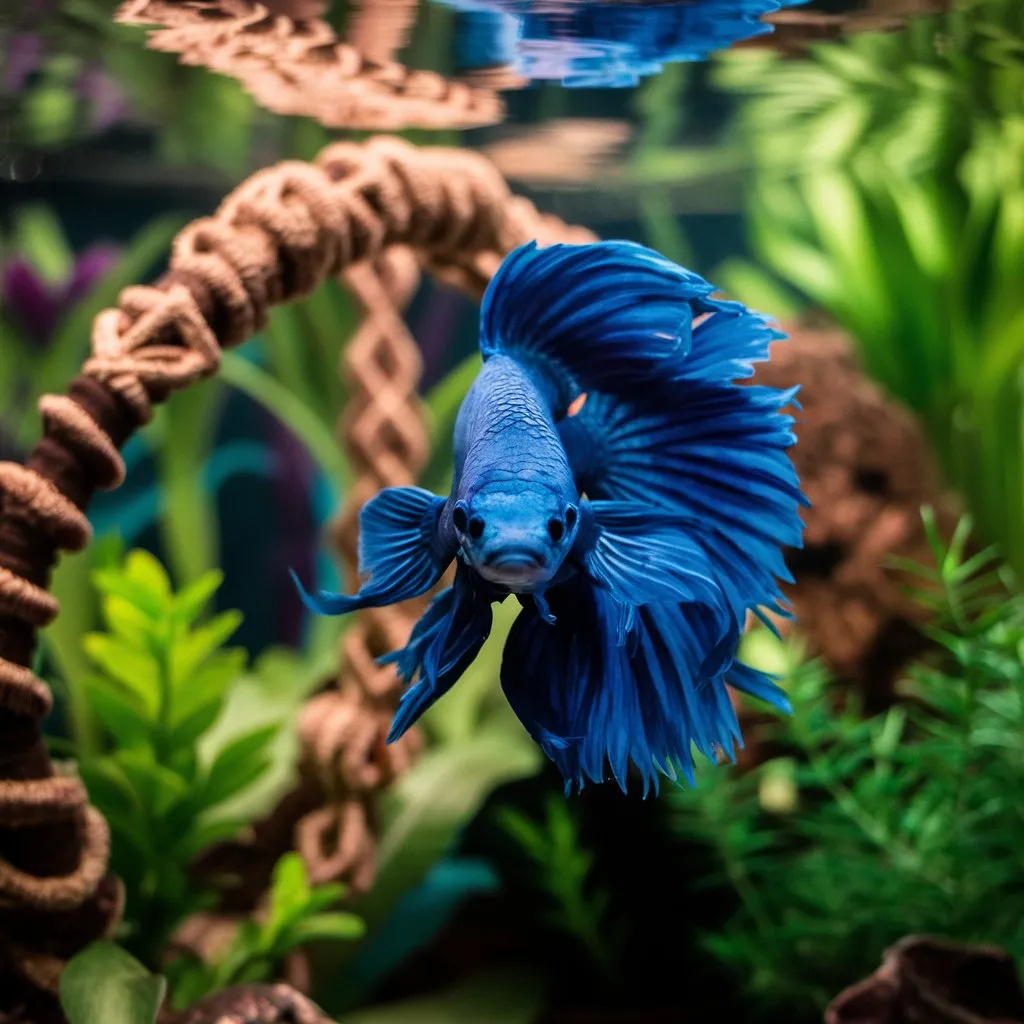Betta fish, often referred to as Siamese fighting fish, are renowned for their vibrant colors and captivating personalities. Among the most mesmerizing varieties in the betta fish family is the Blue Marble Betta. These aquatic gems, with their mesmerizing swirls of blue and white hues, have captured the hearts of aquarium enthusiasts around the world.

Understanding The Blue Marble Betta
The Blue Marble Betta is a unique color variation of the common betta fish (Betta splendens). These fish are characterized by their distinctive marbling pattern, which features a stunning blend of deep blue and pristine white tones. The intricate designs on their flowing fins and bodies create a hypnotizing visual effect, making them a true standout in any aquarium.
Origins and Genetics
The Blue Marble Betta is the result of selective breeding efforts by betta enthusiasts and hobbyists. By carefully choosing and breeding bettas with the desired color patterns, they have been able to produce this captivating variety. The genetic makeup of the Blue Marble Betta is complex, involving the interplay of various color genes and pigment cells.
Appearance and Unique Features
One of the most striking features of the Blue Marble Betta is their vibrant and ever-changing color pattern. As the fish matures, the marbling effect can become more pronounced, with the blue and white hues seemingly swirling and merging in a mesmerizing display. Additionally, these bettas often exhibit long, flowing fins that add to their graceful and regal appearance.
Caring For The Blue Marble Betta
Caring for a Blue Marble Betta requires the same attention and considerations as caring for any other betta fish. However, there are a few specific considerations to keep in mind when providing the best possible environment for these unique aquatic creatures.
Tank Requirements
Blue Marble Bettas thrive in a well-maintained aquarium with a minimum size of 2.5 gallons. The tank should be equipped with a gentle filter, appropriate heating, and plenty of live plants or artificial decorations for the fish to explore and hide in. Maintaining a stable water temperature between 75-82°F is crucial for their well-being.
Diet and Feeding
Like their counterparts, Blue Marble Bettas are carnivorous and should be fed a varied diet of high-quality betta pellets, freeze-dried or frozen foods, and occasional live prey such as brine shrimp or bloodworms. It is important to avoid overfeeding and to provide a balanced diet to ensure the fish’s optimal health and vibrant coloration.
Tank Mates and Compatibility
Blue Marble Bettas are known to be territorial and can be aggressive towards other betta fish, especially males. When selecting tank mates, it is essential to choose peaceful, non-aggressive fish species that will not nip at the betta’s fins or compete for resources. Suitable tank mates may include small, calm freshwater fish such as tetras, rasboras, or corydoras catfish.
What Are The Common Health Issues Faced By Blue Marble Bettas?
Blue Marble Betta fish, also known as Plakat Betta or Plakat Betta splendens, are a popular variety of the Siamese fighting fish (Betta splendens). Like other Betta fish, they can face several common health issues:
- Fin and Tail Rot: This bacterial infection can cause the fins and tails to become discolored, frayed, and potentially rot away if left untreated. It’s often caused by poor water quality or injury.
- Ich (Ichthyophthirius Multifiliis): Also known as white spot disease, this parasitic infection causes small white spots to appear on the fish’s body, fins, and gills. It can be triggered by stress or poor water conditions.
- Swim Bladder Disorder: This buoyancy issue can cause the fish to float at the top, sink to the bottom, or swim erratically. It’s often linked to diet, constipation, or physical deformities.
- Betta Dropsy: This life-threatening condition is characterized by the fish’s scales protruding outward, giving it a “pinecone” appearance. It’s typically caused by an internal bacterial infection.
- Fungal Infections: Betta fish are susceptible to various fungal infections, such as cotton-like growths on the body or fins, which can be triggered by poor water quality or stress.
- Nutritional Deficiencies: An improper diet lacking in essential vitamins and minerals can lead to health problems, such as stunted growth or developmental issues.
Maintaining good water quality, providing a balanced diet, and promptly addressing any signs of illness are crucial for the overall health and well-being of Blue Marble Betta fish. Consulting with an experienced aquarium veterinarian can also be helpful in diagnosing and treating any specific health concerns.
Conclusion
With information of Betta Fish 247 you can understand about the Blue Marble Betta is a true marvel of nature, captivating aquarium enthusiasts with its mesmerizing color patterns and graceful movements. Whether you are a seasoned betta keeper or a newcomer to the hobby, the Blue Marble Betta is sure to enchant and inspire you to create a vibrant and thriving aquatic ecosystem.

Related Posts
What Is A Male Dumbo Halfmoon Betta?
Understanding The Koi Betta Fish Breed
Variety Of Female Betta Fish Types